Saab-Hawtai Deal Didn't Need Government Interference To Fail
When we heard that Saab’s deal with the Chinese automaker Hawtai had fallen through, our initial reaction was a complete lack of surprise. My take was that Saab’s attempts to seek Chinese White Knight from the ranks of that country’s smaller automakers was doomed to fail, as the Chinese government has made it clear that it would like to see its auto industry consolidate. As with all things Chinese, however, I should have consulted more closely with Bertel before writing. Our man in China was quick to point out that the Beijing scuttlebut blamed Saab’s lack of intellectual property, rather than government consolidation rules, was to blame for the collapse of the Saab-Hawtai deal. And sure enough, Automotive News [sub] reports today that
Sweden’s Saab Automobile failed to secure investment from Hawtai Motor Group because of “commercial and economic realities,” not a lack of government approval
And, it turns out that’s the nice way of putting it…
Saab-Hawtai Deal Fails: Chinese Consolidation To Blame?
Saab’s deal with the Chinese automaker Hawtai has failed in a predictable manner, as the struggling Chinese partner apparently didn’t receive government approval for the deal. Saab-Spyker’s announcement of the deal’s collapse explains [via AN [sub]]
Since it became clear that Hawtai was not able to obtain all the necessary consents, the parties were forced to terminate the agreement with Saab Automobile and Spyker with immediate effect. The parties will continue their discussions about a possible cooperation, however now on a non-exclusive basis
This isn’t the first time that the Chinese takeover of a Western brand failed due to the Chinese government’s insistence on industry consolidation, as the Hummer-to-China deal failed for similar reasons. Meanwhile, we should have seen this coming a mile away…
Wild-Ass Rumor Of The Day: MG By GM Edition
One of Bertel and my favorite Chinese car blogs, ChinaCarNews, has been reporting since October than the next-generation of MG/Roewe midsized sedans would be based on GM’s Global Midsized (Epsilon II) chassis (which underpins Buick LaCrosse/Regal and the new Chevy Malibu), and now the rest of the media appears to be catching up. From InsideLine to Autocar, everyone’s running with the story that MG/Roewe, which is owned by GM’s main Chinese partner SAIC, is working on an Epsi II-based MG7 for launch in the 2015 timeframe. According to InsideLine
[In 2015], the MG7/Roewe 750 sedan replacement appears some 15 years after the debut of the Rover 75 they’re based on. A coupelike four-door, it uses GM’s Epsilon platform and will be powered by 2.0 and 2.4 four-cylinder gasoline engines and a 1.9 diesel, all with dual-clutch transmissions.
GM and SAIC signed a Memorandum Of Understanding back in October [.DOC file here], which included the provision that, in addition to developing a next-gen electric architecture,
SAIC and GM anticipate sharing an additional vehicle architecture and powertrain application in an effort to help reduce development costs and benefit from economies of scale.
This could explain MG/Roewe’s rumored use of the Epsilon II chassis, but for the moment GM dismisses these rumors as “speculation.” And no wonder: even GM hasn’t announced when it will offer a dual-clutch transmission in its Global Midsized platform. Chances are, The General will want to offer that combination before its Chinese partners use it to beef up its MG/Roewe brands, which have been in product rehab for some time now.
San Francisco Loses Last Domestic Dealership
Detroit’s brand managers, particularly those at the resurgent premium and luxury brands, have made West Coast sales a high priority as they seek to bring new buyers into once-moribund brands like Buick and Cadillac. California, in particular, is a huge market for luxury and premium cars, and it’s generally an edgier, more youthful market that has long shunned domestic offerings. Everything from “lifestyle events” to no-cost hybrid drivetrain options on Lincoln MKZ have been introduced in an effort to get California’s copious yuppie population interested in Detroit luxury, but the results just haven’t shown up yet. According to Ford’s Mark “MKF” Fields [via AN [sub]], only about 25% of MKZ buyers were tempted by the free-hybrid deal in March, and meanwhile, the San Francisco Chronicle reports that the Golden Gate City has just lost its final domestic auto dealership, a Ford/Lincoln store. Detroit may be California dreaming, but the Buicks and Lincolns of the world are still a long way from gaining ground in the West Coast.
Volkswagen Registers All-Electric Standalone Brand In China
While Michigan Senators, aided by the Detroit News, are chasing their own tails complaining about Chinese EV draft regulations that only exist in rumor form, a major European manufacturer practices Realpolitik and covers all possible bases: Volkswagen appears to launch an indigenous, all-electric brand for China, and (at least for the time being), for China only.
Quote Of The Day: GM Battles The Branding Boogeyman Edition
In TTAC’s early years, we spilled much digital ink over GM’s bloated brand portfolio, wondering again and again what brands should be cut, which should move upmarket and which should move downmarket. It’s a fun exercise, but one that history has largely passed by. Not only did GM cut Saab, Hummer and Pontiac in its bankruptcy, but Chrysler has more than doubled the potential number of brands to be sold through its distribution channels, shifting the brand-clutter center of gravity towards Auburn Hills. But GM isn’t done struggling with the legacy of the Sloan system, as GM North America boss Mark Reuss tells Automotive News [sub] that GM still has at least one major branding battle on its hands: Chevy versus GMC.
We need to make sure that we drive the differentiation in the product and the price to create that separation that we know we can on GMC and Chevrolet. I don’t think we have the margin opportunity set up quite right with GMC.
What's Wrong With This Picture: The Rugged EV Lifestyle Edition
Of all the barriers standing in the way of commercial success for electric cars, the “image issue” is perhaps one of the least understood. Most EV firms have embraced the distinctively Western “green consumption” trend, in which a kind of environmental asceticism drives consumer values of downsizing and ultimately self-denial. But making a conscious choice to not use gasoline and accepting whatever the market happens to offer is not a phenomenon that automakers can expect to sustain itself. If they ever want to achieve mass acceptance, EVs need an image context that goes beyond graywater recycling, “freeganism” and other highly conscious but ultimately self-denying lifestyle choices.
Racing is one obvious way to broaden EV appeal, as it highlights the positive performance aspects of EV drivetrains, but sadly no major OEM will commit to an EV racing series. Besides, racing hardly builds on the existing (if limited) green appeal of EVs. Enter the EV as disaster response vehicle. The NYT has a fantastic story about the use of EVs in rescue efforts after the Japanese quake/tsunami, when gas was largely unavailable. The story proves that EVs, far from being mere lifestyle accessories, can be hugely useful in the right circumstances. And because so many green lifestyle choices stem from a perspective of apocalyptic expectation, this story both broadens and builds on the EV’s existing appeal. Most importantly of all, pictures like the one above will do more to banish the limp-wristed, “anti-luxury” image that curses EVs than just about anything else. Just as SUV buyers would swell with pride seeing an ad image of their Explorer in off-road conditions they would never visit themselves, the image of EVs running first-responder missions in a quake-torn Japan could be of lasting significance.
VW Ends Sportscar Branding Battle By Screwing Audi
There have been a number of important meetings in the auto industry over the last several years that TTAC dearly wishes it could have been a fly on the wall for, including GM’s decision to keep Opel, Fiat’s negotiations with the White House and Saab’s visit to its local payday loan store, to name just a few. But perhaps one of the more interesting boardroom battles of recent years has to be the new VW-Porsche Group’s struggle over how to brand its forthcoming mid-engine sportscar platform which first debuted as the VW BlueSport. Bertel reported last Summer that Porsche, Audi and VW were all bidding for the group’s sportscar development work, but that Porsche was likeliest to emerge with the title.
And it turns out he was right, as Auto Motor und Sport reports that VW has solved the problem by canceling Audi’s planned version of the BlueSport, leaving small mid-engine sportscar efforts in the hands of Porsche and VW. Though the decision makes the BlueSport’s branding challenge quite a bit easier (while cementing the prominence of firms related to Ferdinand Porsche at the expense of the Horch-created Audi brand), it has one less-than-ideal outcome: it removes Audi’s ability to bracket Tesla’s Roadster, a move which would have surely hurt the Silicon Valley upstart. Still, internal politics are more important than obliterating a limited-production competitor… and at least VW has its branding ducks back in one relatively orderly line.
Ever Seen A Buick Move Like This?
One Man's Dream Comes True: Jaguar Supercar Approved
Within weeks of becoming Editor-in-Chief here at TTAC (and through a truly unexpected twist of fate), I was given the opportunity to interview Jaguar’s head of Design, Ian Callum on the occasion of my first-ever visit to Detroit. True to our industry-centric mission, I was in town for Chrysler’s Five Year Business Plan, and to be perfectly honest, I struggled with the challenge of interviewing a chief designer, especially one who had recently rejuvenated the aesthetics of such a storied brand.
As I was fumbling through our breakfast interview, we were joined by a GM executive who happened to live at the hotel where Mr Callum was staying, and when I got the most unexpected answer of the interview, it’s safe to say this exec jumped as high out of his seat as I did. I had asked Callum what his favorite new car was, and to my complete surprise he answered “Chevrolet Stingray Concept.” That answer actually played a surprisingly important role in my subsequent career, as it earned Mr Callum and myself an invitation to GM’s Heritage Center (once we had scraped the GM exec’s jaw off the floor), where we spent three hours wandering around and taking in the best of GM’s glorious past.
Is DeTomaso Making Up For the "D'oh-ville"?
Are You Ready For: A Kia Flagship?
Are you ready to crank some Korean crunk (see video above) and cruise the town in a long, rear-drive, V8-powered… Kia? Get ready, as Kia Motors Australia COO Tony Barolow tells drive.com.au that
We have an interest in all new models under development. A rear-wheel-drive premium sedan could be seen as a logical step from the Optima to the next level of Kia development. It is far too early at this stage to be any more precise about the car but we will definitely maintain a watching brief.
The Hyundai Genesis platform-mate has been photographed in camouflage ( click here for more Korean crunk-free images), and the rumormill has it debuting in Frankfurt this fall, or possibly the NAIAS next January. In any case, get ready for a Schreyer-styled, “proper” Kia flagship to come down the line at some point in the near future.
Alfa Zagato TZ3: The Alfa-Viper Connection
Hyundai's Long-Term Values: Mostly Created Equal
Hyundai’s latest Assurance marketing technique, which guarantees resale values on all 20111 model-year purchases, is already being hailed as the latest in a line of creative, zeitgeist-appropriate incentives. The one downside of guaranteeing residual values: well, people are free to draw their own conclusions from them. For example, it seems safe to say that the Azera and Accent should probably be replaced fairly soon, as their weaker resale values make them stand out from an otherwise extraordinarily consistent lineup. What’s that you say? The new Accent was announced at the same time as the resale guarantee? And an attractive new Azera replacement will be launched within a (the?) year? Er, carry on then.
In all seriousness, whenever Hyundai comes out with a new “Assurance” program, I’m sure a number of other brands look at copying elements. The genius of this latest program, however, is that it only really works if your entire lineup has been updated in a recent and consistent manner. Imagine a chart like this for certain other brands, and you’ll realize that the benefits of a strong and (possibly more importantly) consistent product line can be far reaching indeed.
Are You Ready For Three More Years Of Cadillac Flagship Rumors?
They’re baaaack! Ever since Cadillac displayed its XTS Platinum Concept as a future flagship model, the brand’s lack of a range-topping super-luxo-barge has become an increasingly regular complaint. The XTS’s humble (Epsilon II platform) roots, modest proportions and general “Buick-in-Caddy-clothes” vibe led TTAC to dub it “ The Phantom Flagship,” a criticism that has echoed throughout the automotive media. The issue isn’t so much whether or not the XTS is a good luxury car, but rather the fact that even Hyundai has a more plausible large, rear-drive, V8-powered flagship in the traditional mold. With Cadillac’s products and image steadily improving, the lack of a legitimate flagship is even more glaring. Last summer, after several months of griping from Cadillac fans, rumors began to surface that GM’s then-CEO Ed Whitacre was pushing for a “proper” rear-drive flagship. Well, the rumors are back… and as before, they’re as confusing as ever. Luckily, we’ll have more than a few years to speculate about this mythical beast… so let’s get the party started.
Buick GL8 Minivan: GM's Proudly Non-Global Product
Ever since Bertel showed us the newest version of the Buick GL8 minivan, with its “Business Concept”-inspired design and executive airport shuttle mission, we’ve been curious about the chances of it coming to the US. After all, GM hasn’t sold a minivan in the US since the Uplander died in 2009, a far cry from the 336,000-odd minivans The General sold in America just ten years before. But when we asked our Best and Brightest if Buick could use a minivan, the response was a fairly resounding “no.” One particularly uncharitable soul even suggested that we were trying to goad GM into making a mistake in order to have something to bash them for. But, as it turns out, GM’s US execs didn’t need to be goaded at all to consider bringing the GL8 to the US market. GM China boss Kevin Wales tells Reuters [via the Baltimore Sun] that
They’ve looked at it on and off as long as I’ve been out here. They’ve made a fundamental decision that says demand for that type of product’s not strong enough. We say that’s fine. We’ll just keep selling out here.”
Saab Still Waiting For Rescue Approval, Now Looking To China?
The Swedish National Debt Office has approved Saab’s deal to sell property to its Russian backer, Vladimir Antonov, but the Swedish firm is still waiting on approval of the deal from the European Investment Bank. Saab’s production operations have been shut down for two weeks, since the automaker began having trouble paying its suppliers. The EIB says its must simply review the deal, which would include the sale of Saab’s property to an Antonov-owned bank as well as the release of the remainder of Saab’s EIB loan, although GM gets to review the deal as well before it goes through according to thelocal.se. And since GM has long opposed Antonov taking a large share of Saab, which owns rights to some of its latest technology, Saab is reportedly also talking to several Chinese firms about partnerships that could save the struggling automaker.
What Was That About Boring Toyotas?
On A Clear Day, Can You Envision Buick?
EV Racing Turns Over A New Leaf
Citroen DS Freaks, Your Funky New Love Has Arrived
What's Wrong With This Picture: Buick To The Future Edition
Mazda's Enthusiast Howl
Hey you, you’re an “auto enthusiast,” right? You care about the “driving experience, yes”? Good, name a top-20 global automaker that sells one brand of cars globally, marketed specifically to enthusiasts.
Take your time answering, but there’s only one… and it has something very serious to say to you.
A Wild-Ass Look At Lincoln's Future Products
Ford’s Lincoln turnaround continues to be a hot topic for industry watchers who have a hard time squaring the success of the Ford brand with the weak performance of Ford’s luxury efforts. Thus far, the X-factor is Lincoln’s product, which has for too long consisted of little more than tarted-up Fords without any of the the unique attributes that drive luxury brand aspiration. So, what does the future hold for Lincoln’s product plans? According to FordInsideNews, the answer is as predictable as it is troubling: Global C-Platform. That’s right, Lincoln’s future is based on the same platform as the future of the Ford brand.
What's Wrong With This Picture: Brand Management Edition
Typically, when a focused, well-branded company like BMW buys storied brands and then tries to combine them, the results are less than ideal for all involved. Thus far, BMW had actually been doing a fantastic job with its MINI and Rolls-Royce franchises, expanding into new niches while revitalizing potent brands with high-quality products. But putting the two together? It’s not clear how many buyers will line up for this Rolls-fettled MINI Goodwood (price estimated as high as £50,000), but at least the thing has good historical precedent in the Peter Sellers Mini-Rolls. And compared to some of the modern attempts to create premium city cars (hello Aston Cygnet), that makes this über-priced MINI-mashup something more than a mere cynical play for profits and C02 emission average reductions. In fact, it’s something of a tribute to BMW’s stewardship of two brands that could well have been botched over the past decade or so. Hit the jump for details on the Mini Goodwood’s posh appointments.
The New Language Of Lexus Design
Lexus’s GS-series of sports sedans has been a perennial sales dog for years now, winning Toyota’s luxury brand few converts from its 5-Series, E-Class and A6 competition. In fact, it’s a testament to Lexus’s successes in building unconventional luxury niches with the RX and ES lines that it’s been able to become a major US market luxury brand without a popular full-sized luxury sedan. But with luxury sales competition heating up under pressure from BMW and Audi, it’s clear that Lexus isn’t willing to let the GS’s underachievement continue unaddressed.
Lincoln Dealers Have Questions… And Not About Product
Ford Motor Company has benefited immensely from its investments in its Blue Oval Brand, improving sales and profits, while wrapping its entire operations in an aura of invulnerability. But underneath all the Ford-branded success lies a problem that, more often than not, has been conveniently swept under the rug: Ford’s luxury offerings are in chaos. The last time we checked in on Lincoln, Ford was trying to convince dealers that Lincoln’s future product would be competitive in the tough luxury market… without disclosing any details that might give salesmen hope that future Lincolns will be something other than an obviously tarted-up Ford. But as tough a sell as that is, Lincoln’s dealers seem to be even more worried about the more prosaic elements of Ford’s luxury brand turnaround…
Ask The Best And Brightest: What Ten Alfa-Romeo Designs Should Define Its Future?
We recently asked our Best And Brightest to help Chevrolet look back through its past and find the designs that should inform the brand’s future design direction, an assignment that touched off a number of fascinating conversations. Now, with news of Alfa’s US launch being delayed at least in part due to problems with the design of its all-important D-segment sedan, we reckon it’s time to help Alfa navigate its current design crossroads. Only this time, it’s even more important. Though once-famous for its crackling V6s and flat-fours, Alfa’s have become increasingly dependent on their non-mechanical attributes: style, flair, and Italian-ness. And unlike Chevrolet, the brand has more recent design heritage to draw on as it approaches a US launch just as automotive designs are becoming increasingly emotive. But whereas Chevrolet lacks design identity, Alfa suffers from too much identity: though the 8C is a gorgeous car and a sublime halo, its design cues are becoming something of a crutch for Alfa’s designers.
And so we ask: if Alfa is looking for a new design direction to help launch it as a global premium/sporty brand, what past designs should it turn to? My personal top choice, the Alfetta GTV6, may not be the most beloved design amongst true Alfisti, but it’s a distinctive design at the crossroads between old- and new-school Italian brio. If Alfa is to succeed, it needs designs that reference both heritage and modernity, and to my eyes, the GTV does just that. But that still leaves nine more choices…
Alfa-Bits: US Launch Delayed, Strategy Problems Arise
A report from Automotive News Europe [sub] says that Alfa-Romeo’s return to the US market has been delayed from late 2012 to 2013, as its parent company Fiat struggles to work out a satisfying turnaround strategy for the sporting brand. According to ANE’s sources,
In a presentation to bond holders held on March 29, [Fiat CEO Sergio] Marchionne showed a slide that said the Giulia sedan and wagon, which will replace the 159 sedan and Sportwagon, would be made in the United States starting in 2013. A year ago that slide, which was part of Fiat Group’s presentation of its five-year strategic plan, showed the Giulia models being built in Italy and debuting in North America in late 2012 as part of the brand’s return there. The Fiat spokesman now says the company still needs to decide where the make the Giulia.
Once again, Fiat finds itself torn between competing government backers. Should Fiat build the Giulia, which will be closely related to the replacement for the Chrysler 200 and Dodge Avenger, in the US (as a thank-you for receiving a bailed-out Chrysler) or in Italy (to keep jealous politicians and labor unions happy)? But it turns out that this isn’t even the extent of Alfa’s problems…
Are You Ready For: A Brand-New British MG?
MG has been building its 1995-era MGF (now MG TF) at its Longbridge, UK plant off and on since 2007, but it’s been a purely knock-down assembly affair, with kits being shipped in from Nanjing, China. But a new British-built MG is about to go into production since the brand was bought by Nanjing Auto in 2005 (Nanjing has since merged with SAIC). Called the MG6, the new compact sedan isn’t completely built at Longbridge (UK workers build and fit the engines, as well as installing the front suspension and subframe, exhaust system and electrics, but bodyshells are shipped from China), but it was designed and engineered at SAIC Motor’s European technical center in the Midlands.
Is that British enough for you?
Saab Story: No Money, No Name?
Earlier this week we learned that Saab can not pay its supplier bills until its Russian sugar daddy, Vladimir Antonov, gets Swedish government approval to buy into the company that owns it. Now, suppliers are speaking out, telling Automotive News [sub] that the brand and its owner, Spyker Cars, owes “tens of millions” of Swedish crowns (10m crowns equals about $1.6m). A representative of the Swedish suppliers association explains
There is a perception in the media that there are discussions on extended credit times and such. But it is not about that, it is about the fact that Saab must pay its bills. If they cannot sort out their financial situation, things look very bleak.
With a “desperate” hunt for investment underway, Saab’s only hope appears to be Antonov, who says he has $71.5m to invest, an amount that should cover the $4.7m+ supplier debts. Meanwhile, work at Trolhattan has been stopped for at least the rest of the week. But even if Antonov gets Swedish government approval to invest, another, equally dire problem appears to be materializing: a dispute over the use of the name “Saab.”
What's Wrong With This Picture: Imprez'd? Edition
Ask The Best And Brightest: What Ten Chevy Designs Should Define Its Future?
In celebration of Chevrolet’s approaching 100th birthday, GM’s global design boss Ed Welburn took a look back at the history of the brand’s design and picked ten models that he found to be the most significant and influential. His list has quite a few of the usual suspects (’55 Bel Air, ’63 Stingray) and a few curveballs (1989 C/K Pickup?) and, in my mind anyway, some significant omissions. Welburn’s list captures the scope of Chevy’s design history well, but I’m not convinced it’s the list that I would use to define Chevy’s design direction as it enters its second century. Hit the jump for his list, and then let us know what ten Chevy designs from the last hundred years you would look to as you guided the brand into its 21st Century future.
What's Wrong With This Picture: The L-Finesse Future Edition
According to Lexus
The LF-Gh, which stands for Lexus Future Grand Touring Hybrid, sets out to redefine the premium grand touring sedan. Through this exercise, the definition of L-Finesse, the marque’s design philosophy since 2001, has been refined and evolved to include a bolder, more distinct projection of what a luxury car could become in a modern world. The result is the LF-Gh concept, which conveys original thoughts and ideas that may migrate to future Lexus vehicles on a global scale.
From these teasers, it’s hard to tell what Lexus’s “spindle grille” actually looks like, but the brand says it “hints at the new face of Lexus vehicles.” If nothing else, Lexus seems to be diverging from its arch-conservative stylistic roots, a move that will be interesting to watch given Toyota’s history of success with a substance-over-style strategy.
Fiat To Own 30% of Chrysler "Within Weeks"
Automotive News [sub] reports that Fiat is “weeks” away from concluding an agreement in which 90 percent of its Latin American dealers will sell Chrysler vehicles, triggering a government clause that will increase Fiat’s stake in Chrysler from 25% to 30%. Known as the “Non-Nafta Distribution Event” in the Chrysler operating agreement, it calls specifically for
execution by the Company of one or more franchise agreements covering in the aggregate at least ninety percent (90%) of the total Fiat Group Automobiles S.p.A. dealers in Latin America pursuant to which such dealers will carry Company products.
And that’s it. Why does it matter that this agreement isn’t any more specific? Because Fiat has no plans to sell any Chrysler Group brands anywhere. Products, yes. Brands, no.
Buick "Ampera" In Development
Bloomberg reports:
Designers and engineers are working on a version of the plug-in hybrid Opel Ampera, which was modeled after the Volt and scheduled for sale in Europe this year, with a Buick grille and front-end styling, said the people, who didn’t want to be named because the plans are private. The Buick version would begin sales in 2013 if it gets final approval, the people said.
In theory this is a brilliant plan. Since capacity constraints are limiting production right now, GM might as well get its profit while the early adopters are still in the market. On the “not so brilliant” side of the equation is the fact that the most basic Volt already costs upward of $40,000. At that price point, how will they possibly tempt buyers up into a rebadged Opel version of the same car? On the other hand, there’s no automaker in the world that manages to associate itself so consistently with flailing brand management as does GM. Case in point, the Saturn “Flextreme” concept of 2008 pictured above. Meanwhile, this comes as no news at all to our friends in China.
Chrysler Claims Rights To "Imported From" Wherever
Chrysler is coming down hard on some of their Jeep dealers. The Monroe Dodge Superstore in Monroe, MI, just down the road from Toledo, wanted to celebrate the 70th anniversary of the Jeep. The first Willys-Overland Jeep was built 1941 at their plant in Toledo. The good folks at the Monroe Dodge Superstore thought hard about a good catchphrase. Then, the lightbulb went off. Presto, 600 T-shirts were printed, emblazoned with “Imported from Toledo.” They immediately heard from Chrysler. Not in a good way.
Simca Returns (Pending German Patent Troll)
Renault has had quite a bit of success in recent years with its budget-brand Dacia, prompting Peugeot-Citroen to reach back into its bag of abandoned brands for a name to put behind its own low-cost car offerings. Having briefly considered the Talbot name, it seems that PSA has settled on something a little more modern and relevant to low-cost offerings: Simca. Which makes quite a bit of sense, if you think about it. Rather than naming a budget brand after the makers of hugely expensive pre-WWII luxury cars (a trick Chrysler tried once already with the Horizon), PSA can reference one of the most influential (if forgotten) small-car brands. At least, it can if it deals with that most modern of problems, the patent troll. AutoBild reports
Joachim W. “Simca” signed in September 2007 at the German Patent and Trademark Office as a trademark for the class “cars”. Then a cancellation request was made - probably by Peugeot. The French made at least one attempt to register Simca on 2 June 2008, whereupon Joachim W. submitted an application for cancellation.
It’s not clear what claim Mr Simca might have on the name, as SIMCA stands for Société Industrielle de Mécanique et Carrosserie Automobile.
VW Counting Its Un-Hatched (Porsche-Powered) Alfas
Volkswagen’s long flirtation with Fiat’s Alfa Romeo brand has hit a few obstacles recently, as Fiat CEO Sergio Marchionne has been adamant that he won’t sell its money-losing brand to his European rival, saying
As long as I am CEO of Chrysler and Fiat, Mr [Ferdinand] Piech will never have Alfa Romeo. It’s hands-off. I told him. I will call him and I will email him. I’m not the one who bought Seat. He’s the one who bought it. I don’t know if he can [fix it], but he needs to try.
Which, as Bertel has pointed out, is a harsh burn: after all, VW may not be “winning the future” with its “Spanish Pontiac,” but at least it rescued SEAT from a struggling Fiat in the early 1980s. And now Herr Piech doesn’t want to take no for an answer, telling Autocar that it would fix Alfa up quick-smart. How? The same way VW might sex up its Audi brand: by using Porsche engines. Yes, really…
Motor Trend CPO Program Outsells Kia, Porsche
I know what you’re thinking: “What is a magazine publisher doing certifying pre-owned vehicles?” The answer: selling a lot of cars. Motor Trend’s Certified Pre-Owned (CPO) program, which certifies vehicles and dealers and offers some service features, sold more vehicles last year than Kia or Porsche’s in-house CPO programs, at 10,010 units sold. Which raises questions about both the nature of consumer demands and the efficacy of some of these OEM CPO programs. For one thing, it’s not at all clear why consumers seek out a new car magazine’s stamp of approval on a used car. After all, would you rather have your car certified by its manufacturer or by the magazine that picked the ’97 Malibu and 2002 Thunderbird as its Car Of The Year? Not that Motor Trend has anything to do with its eponymous CPO program, mind you, as that is operated by EasyCare. And that firm has some 2.6m current service contracts, a number that puts MT’s 10k units into perspective. But the real question here is how do CPO sales by brands like Porsche, Kia and Jaguar get beat by a magazine? Given that EasyCare also administers the official Volvo, Mazda, and Jaguar CPO programs, isn’t it a bit odd that the Motor Trend-branded program sells nearly as many cars (or, in the case of Jaguar, more)?
BMW Brings Sechsy Back
We’ve already seen BMW’s new smooth-and-sleek Six Series as a droptop, but is it possible that the design will gain back some of its Bangle-ian spizzarkle as a coupe? Don’t hold your breath. The new design has more old-world grace than the previous model, but as a result it looks like it’s trying a bit too hard to be a Jag or Maserati. Sure, both of those brands offer some of the most elegant touring options on the market, but isn’t BMW supposed to be just a little farther ahead of the curve than its “Olde Worlde” competition? Shouldn’t BMWs be just a little bit more architectural and a lot more coldly technical-looking? Still not sure? Hit the jump for some endless B-Roll and a gallery.
Where Did The Pontiac Fans Go… And Why?
Remember Pontiac? You know, the brand that “builds excitement.” And for all the advertising dollars GM spent over the years, trying to convince buyers that a Pontiac offered something that none of its other brands could, it turns out that quite a few former Pontiac owners have made the switch to Chevrolet and GMC. According to RL Polk
Looking at full-year 2010 data: the Pontiac brand saw 57,641 customers return to market and General Motors was able to recapture 53.3% of them. Historically through 2008, 60% of Pontiac owners have remained loyal to General Motors. In 2010, the loyalty rate fell to 47%, which represents a 13 percentage point decrease in overall General Motors loyalty. With the discontinuation of Pontiac: 33.5% defected to Chevrolet, 11.7% defected to GMC, 6.7% defected to Buick, and 1.5% defected to Cadillac.
Defections to other domestic corporations made up nearly 16% of owners. The Ford brand ranked 2nd in the conquest of Pontiac owners at 10.5%. Chrysler Corporation saw the Dodge brand ranked 9th, capturing 3.2%. Jeep and Chrysler combined were able to conquest 1.7%.
Defections to import makes were nearly 31%. Among the foreign automakers, Toyota was able to conquest 7.7% of Pontiac owners, while Honda was just behind capturing 7.5%.
Best and Brightest, I have to say this confuses me. How did over ten percent of GM’s “driving excitement” brand end up at the its truck brand (GMC)? How did over 14 percent of buyers replace the brand that brought us the GTO and G8 for the mainstream, thrill-free anonymity of Honda and Toyota? How on earth did Dodge, the remaining brand that most resembles Pontiac, only manage about 3%? You may have to let me down gently on this, B&B, but are automotive brands not as important as people make them out to be? Say it ain’t so!
Chevy Captiva-ted By Fleet Sales
Daimler's Brand-Aid
Having struggled to launch and expand its Smart brand, Daimler might be forgiven for being a bit gunshy about investing in brands other than its globally-recognized Mercedes-Benz marque. And it seems the German outfit is currently agonizing over not just one but two big brand choices on the opposite ends of the automotive spectrum. First, Auto Motor und Sport reports that Daimler’s bosses are still undecided about the fate of the über-luxury Maybach brand, noting
“We have to do this year, because the model cycle is not endless,” Daimler CEO Dieter Zetsche tells Auto Motor und Sport. Here, the decision is open, even though the Maybach models are profitable. “I hope for a positive decision as long as we can create the proper conditions. We have invested heavily in the brand, but that is past. On the other hand, we now enjoy a very attractive profit margin on a per-car basis.”
If there’s one major challenge facing Maybach, Zetsche admits, it’s European emissions standards. Which is where Daimler’s other branding problem comes in…
Lancia Thema: Imported From… History?
What's Wrong With This Picture: Jeep Finds Its Moral Compass (By Accident?) Edition
Lord Love A Lagonda
About two and a half years ago, Aston Martin started talking very seriously about bringing back its “four door, four seat” Lagonda brand, arguing that the move
would allow us to develop cars which can have a different character than a sportscar, and therefore offer a perfect synergy.
But, because Aston already had a four-door in the works, the Lagonda Concept turned out to be a bloated abortion of a luxury SUV-cum-Crossover. And having been met with resounding derision from fans as well as high gas prices and an economic downturn, Aston wisely hustled the Lagonda Concept out of sight and proceeded to embarrass itself by rebadging a Toyota. But now that the world economy is looking a little bit better and gas prices are headed up again, Aston Martin is back to touting Lagonda. And this time it seems the British sportscar firm is imagining a whole line of SUVs aimed at the most refined and tasteful buyers on the world luxury market.
Don't Call Me Caravan!
A Glimpse Of Nissan's Next Design Direction
Return Of The Ram Vans: Fiat Ducato, Dobl Coming To The US Next Year
With Sprinter back under the Mercedes sign, Chrysler Group is looking to Europe and Fiat’s Doblò (above) and larger Ducato to expand back into the commercial van segment, starting next year. The European commercial vans are a far cry from the last Ram-branded body-on-frame vans, as the Doblò is actually based on a 108.5 inch wheelbase version of Fiat’s SCCS platform, a development of GM’s Gamma subcompact platform. As a result, the front-drive Doblò comes with engines ranging from 1.3 to 2.0 liters, and are largely powered by diesel engines. The Doblò is available in everything from a two-door chassis cab pickup, a three-, four- or five-door panel van, or a five-door passenger configuration.Because the new Ram commercial vehicles will be imported starting next year, expect only the van variants to avoid the “chicken tax.“
The larger, rear-drive Ducato offers a dizzying number of body variants, with wheelbases ranging from 118.1 inches to 149.6 inches, and offers only diesel engines in displacements from 2.2 to 3.0 liters with 100-155 HP. Until we get more details, it’s impossible to know which versions of these vehicles will come to the US, and whether the diesel and (for possibly even natural gas) versions will come as well. But the real question remains the same as it was a year ago:
how will these Euro-derived efficiency-oriented urban haulers jive with the Ram brand’s overbearingly bro-magnon branding?
World's Top Ten Car Brands in 2010
Here we go again. For your perusal pleasure, you’ll find below JATO Dynamics Brazil survey of the biggest car brands in the world’s largest markets in 2010 (as reported by Brazilian car business site automotivebusiness.com.br). Mind you, we’re talking brands here. We are NOT talking manufacturer groups. So Nissan is definitely separated from Renault, Fiat’s numbers do not include Chrysler, nor does Chevrolet include Cadillac or for that matter Wuling. It’s a little different from OICA’s list. And, to me at least, very interesting. I believe this list reflects better how consumers view the individual brands.
Ferrari To Ford: F You
Ford and Ferrari finally settled their differences over the alleged trademark infringement by Ferrari. In cases like these, one lawyer usually tells the other: “What does it take for this to go away?” In this case, Ford’s lawyer must have answered: “Lose the F, or lose the case.” And that’s what happened.
Lotus: You Love Us, We'll Do It
PSA Plans Bargain Brand
France’s PSA wants to get more expensive and cheaper at the same time. PSA plans to up-position their Peugeot and Citroen plans. Probably envious of Renaults success with their Dacia brand, PSA wants to create a completely new low-cost brand, says Automobilwoche [sub].
How Is This A Saab?
Saab’s PhoeniX concept has two very different purposes: Saab’s Chief Designer Jason Castriota claims the point of the concept was to create buzz and draw attention to the fact that Saab is still around, but it also provides the first look at a new platform that will underpin future iterations of the 9-5, 9-3 and 9-4X. Saab’s Jan-Åke Jonsson tells What Car? that flexibility is key to the new platform, and that “though expensive” it will ultimately save Saab money, saying
We will be able to use the same powertrains in all our vehicles and build them in the same plant (Trollhattan in Sweden), so there are lots of benefits
Which makes you wonder where the money is coming from to develop an all-new, flexible platform. But the PhoeniX Concept also forces you to ask another question: how exactly is this thing a Saab, anyway? At least that’s what former BMW designer Chris Bangle wondered. Hit the jump to see Bangle tussle over the issue with Castriota [courtesy: CarDesignNews], before the Saab designer goes over the Phoenix’s design and place in Saab’s future.
Mitsubishi: Evo Out, EVs In
When you think of Mitsubishi, what do you think of? Chances are, one of the first things that runs through your mind when Mitsubishi gets a mention, is the turbocharged, AWD, rally-car-for-the-road Lancer Evolution series. For decades now, the Evo has provided Mitsu with some desperately-needed sense of identity, although it never really reflected a brand philosophy the way Subaru’s WRX/STI series did for its AWD lineup. And now, it seems, Mitsubishi is done trying to build a brand on a rally replica. Autocar‘s Matt Prior recently sat down with Motsu’s global product director Gayu Eusegi, and he heard some rather jarring news:
The Lancer Evolution X, Eusegi told me, will be the last Evo. “There is still a demand [for the car],” he said, “but we must stop.” Eyebrow up.
“Our influence now is EV technology,” Eusegi said, adding that the decision was a “policy change”.
It seems Mitsubishi, which is going to introduce eight full electric or hybrid cars by 2015, has decided its image is about lowering CO2, not making lurid replicas of rally cars that don’t go top-level rallying any more.
Eusegi said that customers would find it “easier to understand” what Mitsubishi was about if it was no longer in this motorsport-inspired market.
Eusegi goes on to apparently confirm that the Evo X will be the last of the line, until such time as rally racing goes electric. Which means that if you’ve always wanted to buy a new Evo, you might want to think about picking one up soon. After all, an EV-heavy strategy may not be the silver bullet for Mitsubishi, but the Lancer Evolution has had its chance at playing halo. Change can be painful, but it is the only constant… and Mitsu has to evolve or die. Even if that means the Evolution dies first.
Alfa Romeo 4C Can Conquer Our Shores Any Time
Opel Crosses Over: Common Platforms In, Common Sense Out
Since 2002 GM’s Compact Crossovers, like the Chevrolet Equinox, GMC Terrain and Chevrolet Captiva/Opel Antara have been built on a unique platform known internally as “Theta.” That platform, which debuted on Saturn’s Vue, was developed largely in Korea by GM-Daewoo, based roughly on GM’s Global Midsized (“Epsilon”) platform. Since 2002, Compact CUVs have become one of the fastest-growing segments in the US, and though GM’s Theta-based CUVs have sold well, the competition is moving towards mildly-modified C-segment platforms for Compact CUVs in order to use as many common components as possible, thereby lowering the cost of development and increasing manufacturing flexibility. Now, it seems that GM is following suit, dropping the Korean-developed Theta platform for a new generation of Compact CUVs developed by Opel on the Astra’s global Compact (Delta II) platform.






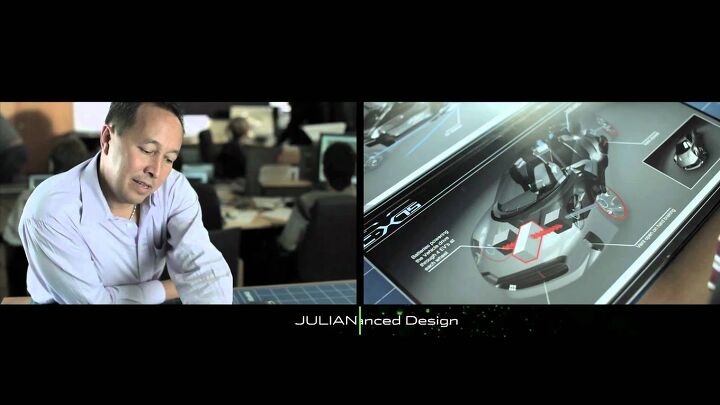

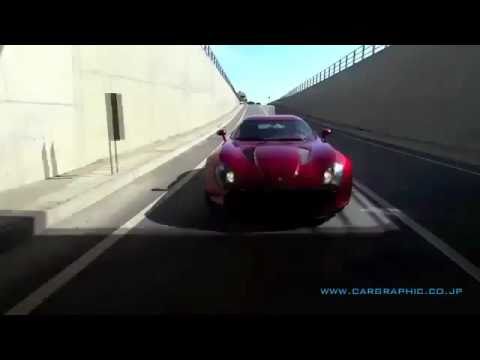
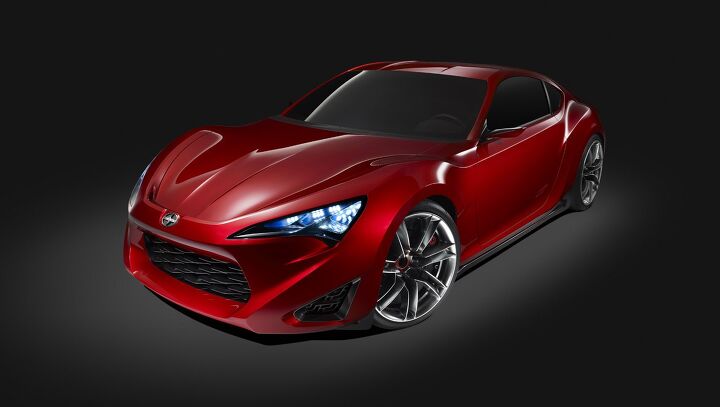



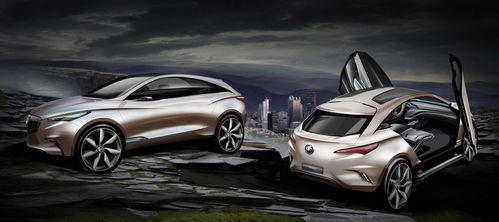

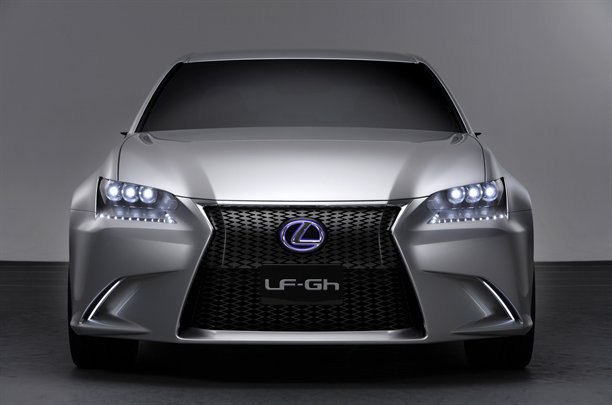
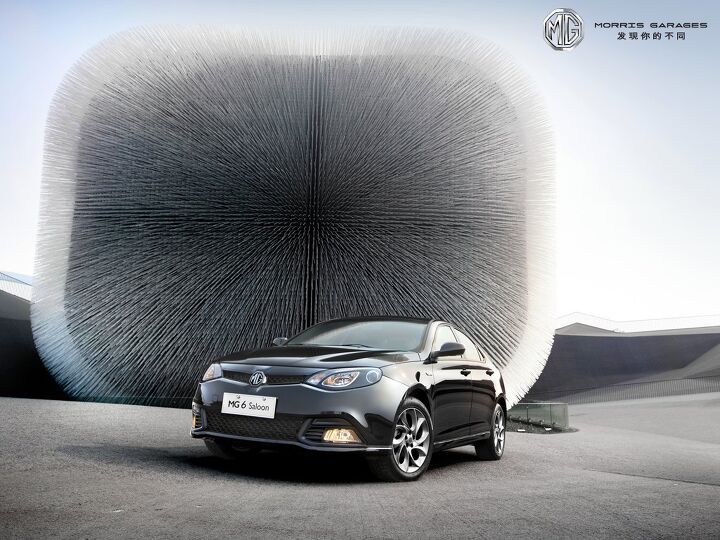



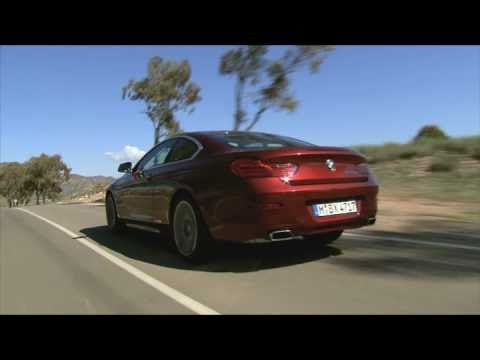
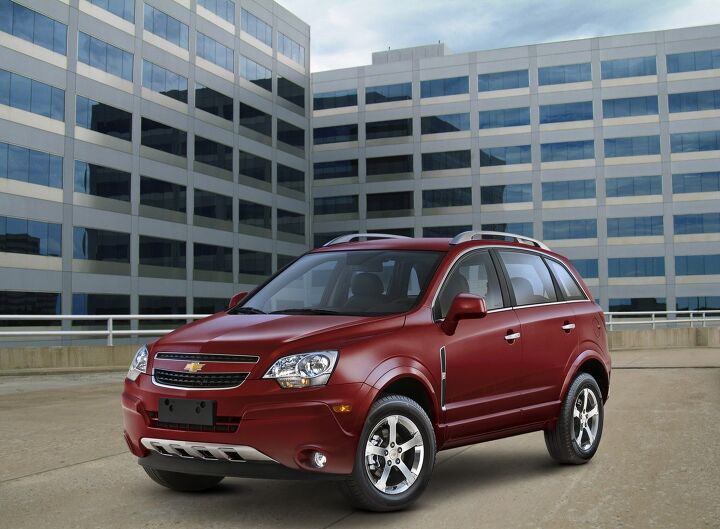
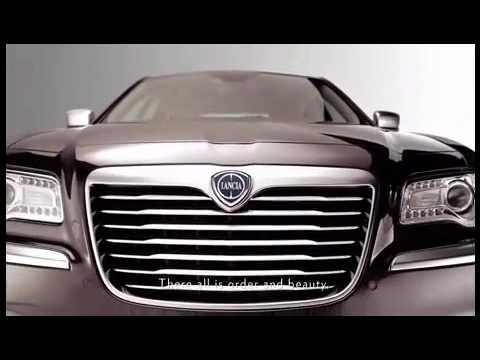
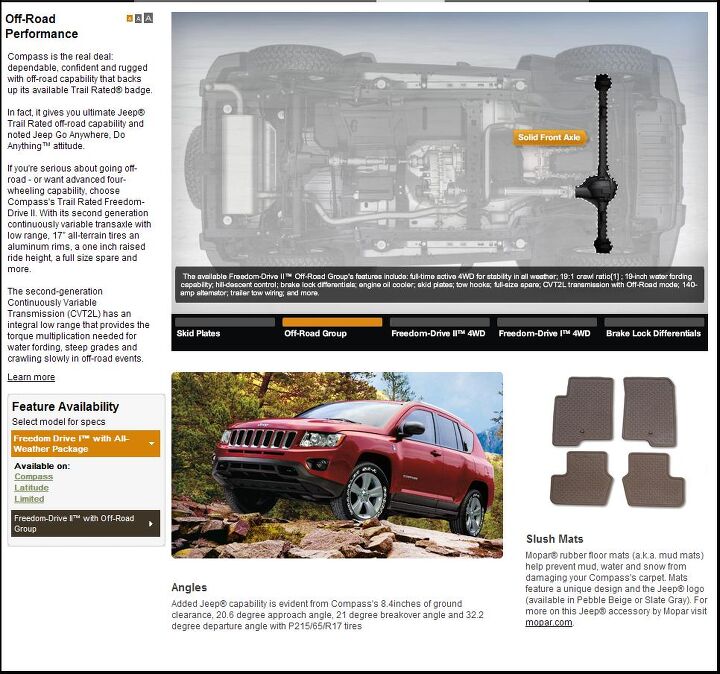







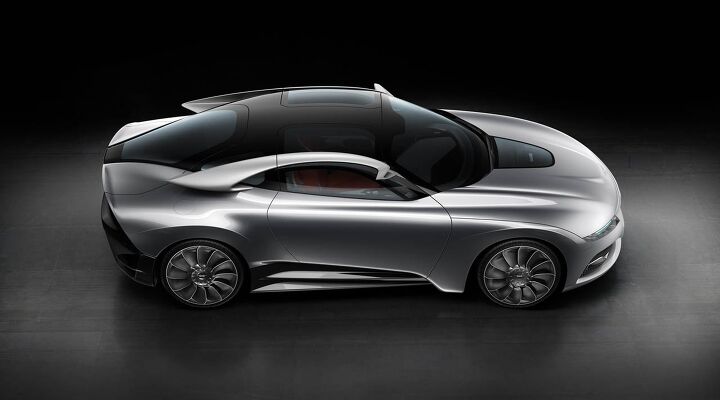
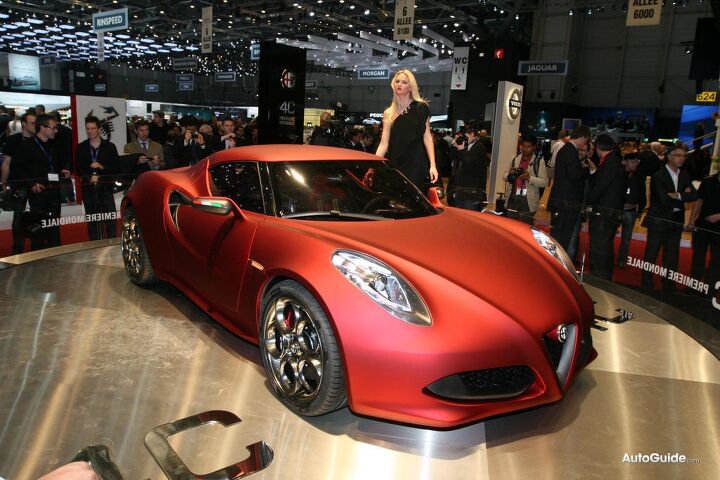

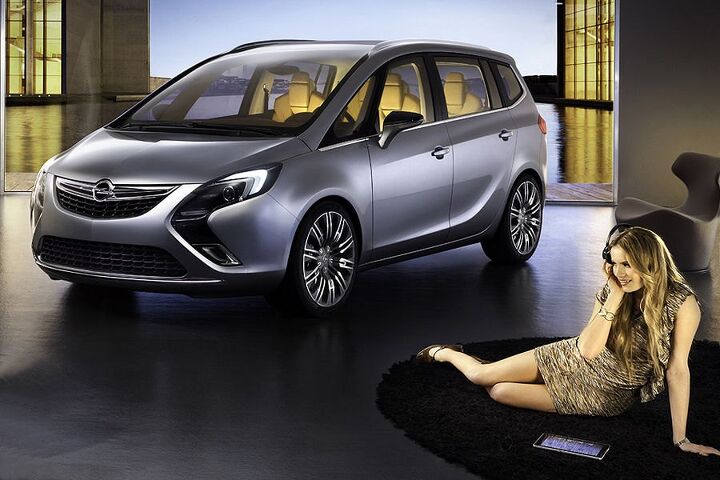













Recent Comments